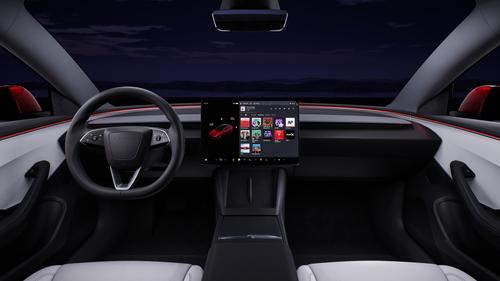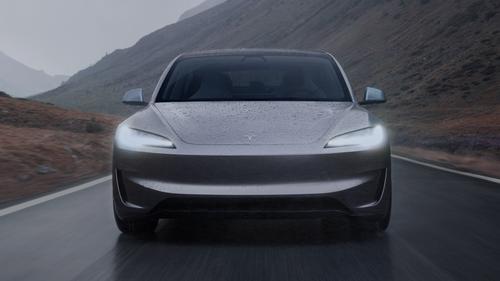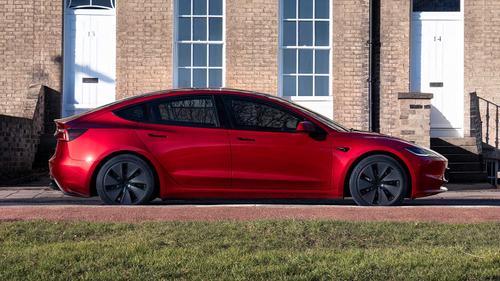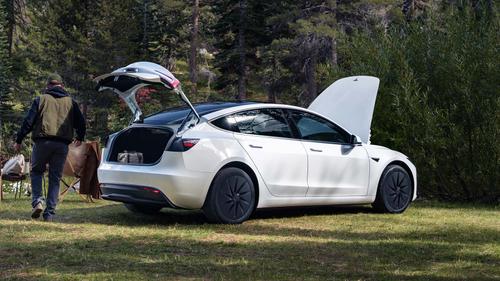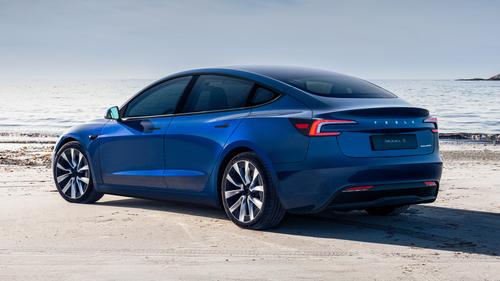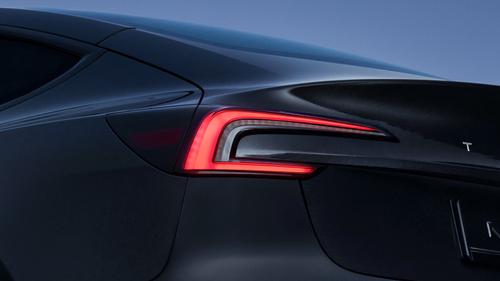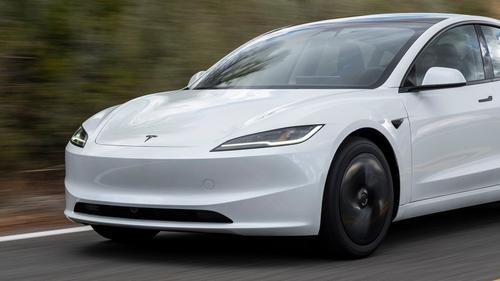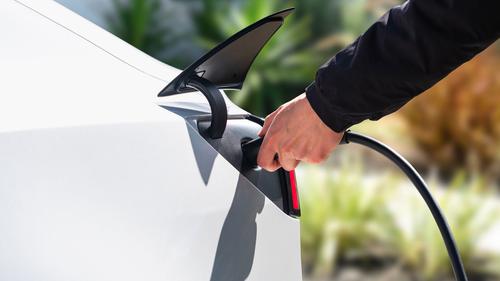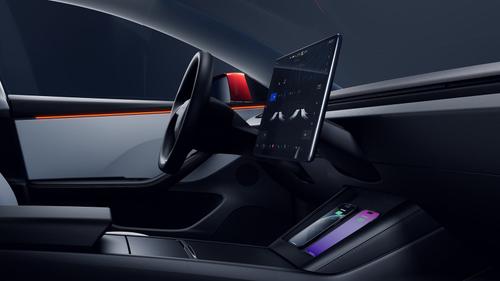













Tesla Model 3 review
The Tesla Model 3 has achieved a lot since launching in 2017. It was the most affordable long-range EV for a long time, and it helped catapult the brand from an upstart EV maker into a global success story.
It wasn't perfect, however, with a firm ride and mediocre refinement. That's where this facelifted Model 3 comes in. Informally known as the 'Highland' update, Tesla claims this has fixed most of the Model 3's drawbacks. So let's find out…
- Excellent range and performance
- Refined and comfortable
- Loads of standard equipment
- Hyperactive steering
- Annoying indicator and gear selector controls
- Too many functions buried in infotainment menus
Should I buy a Tesla Model 3?
For those unfamiliar with the Model 3, it's Tesla's most affordable car – a four-door, five-seat, vaguely saloon-shaped EV. There are standard and long-range battery options, with single-motor rear-wheel drive on lesser cars and dual-motor all-wheel drive on faster versions. The Highland update arrived in the UK in 2024 with updated styling, a new suspension setup, and a wealth of other changes under the skin to improve the overall experience.
"We've called other cars minimal, but the Highland Model 3 takes this to the extreme. The dash contains the steering wheel, the infotainment screen and the glove box – and that's it"
Taking in the new Model 3, the most obvious visual overhaul is the car's lighting. The front has new, slimmer headlights that are mounted lower down, while the brakelights have been more gracefully integrated into the boot lid. Being critical, the car's side profile seems a little unbalanced, with a low, stubby front end giving way to a slightly bulbous passenger compartment. However, that's just the price you pay for the car's excellent aerodynamic efficiency without sacrificing practicality.
We'll delve into the driving experience in much more detail below but, suffice to say, the new Model 3's setup is far superior to older versions. Gone is the overly firm ride quality, replaced by a supple, well-judged setup – while the disappointing refinement makes way for a much more hushed cabin. We're not totally sold on the steering, however, which feels overly alert – like the old Model 3 – so you have to be quite deliberate with your inputs not to unsettle the car.
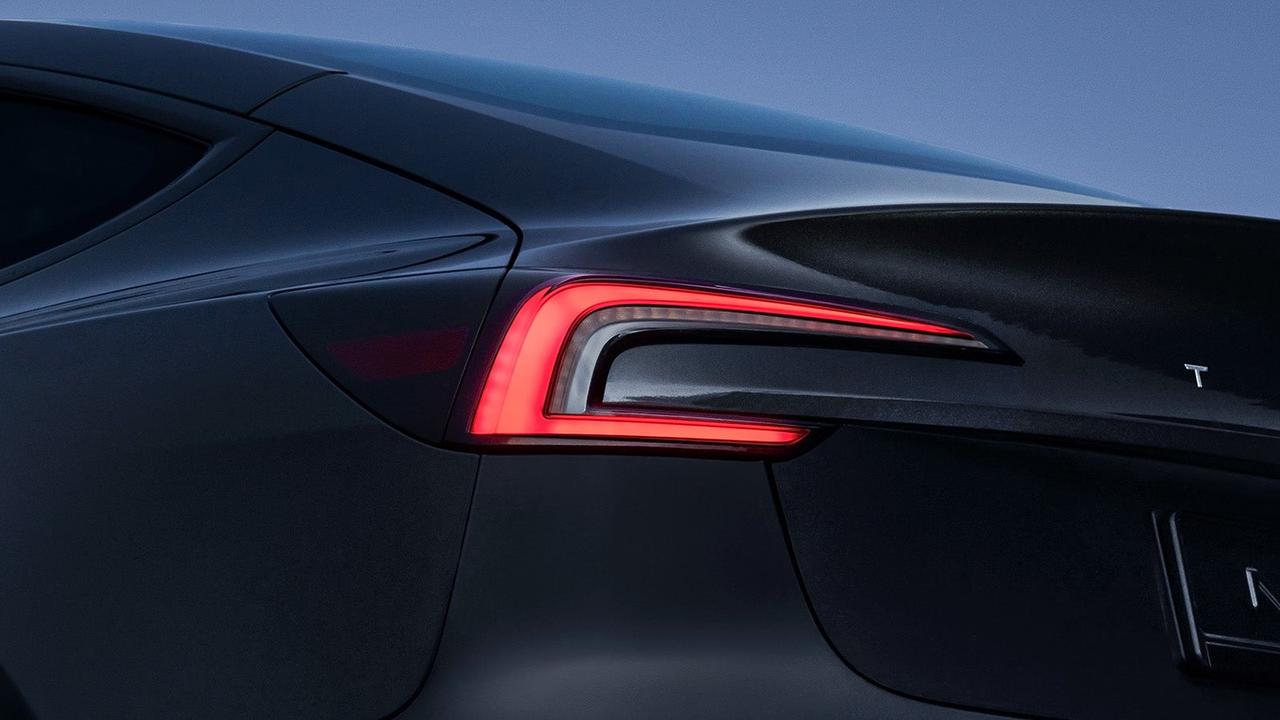
Standard equipment has always been a plus point for the Model 3 and the new Highland car takes it a step further. Every single model has heated, cooled and power-adjustable front seats, plus heated rear seats and a heated steering wheel. You also get a powered boot lid, ambient lighting, climate control, a massive fixed glass sunroof, and a built-in dashcam feature. Finally, all cars get basic 'Autopilot' which includes automatic steering within your lane and adaptive cruise control – you can upgrade this to add features like automatic lane changes and driverless summoning within car parks.
Of course, like every Tesla, you also get an enormous screen in the middle of the dashboard that controls nearly all the car's functions. The screen itself is super sharp and quick to respond to your touch and, since there's so much screen real estate, on-screen controls are large and easy to hit on the move. However, there's such an enormous amount of functions within the screen – some within menus, some as widgets on the home screen – that the whole thing feels a bit daunting until you sit down and spend a good chunk of time exploring its extensive features.

As a brand-new car, a standard-range RWD Model 3 is a hair under £40,000, narrowly avoiding the luxury car tax. This version has a 318-mile claimed range or you can spend another £5,000 upgrading to the long-range RWD car, which achieves 436 miles (or 466 in cars sold after October 2025). Those are excellent figures for the price and make the Model 3 a top choice if you're a high-mileage driver – a task made even easier by Tesla's extensive Supercharger network.
We'll cover the Model 3's interior, tech and driving experience in more detail lower down, but there's no question that it should be near the top of your list if you're looking for a first-class electric car. The range, the tech, the ride comfort and the practicality are all near the top of its class. If you can live with the quirky dashboard controls and the over-eager steering – and can make sense of its dizzying infotainment system – this might be the perfect car for you.
Interior and technology
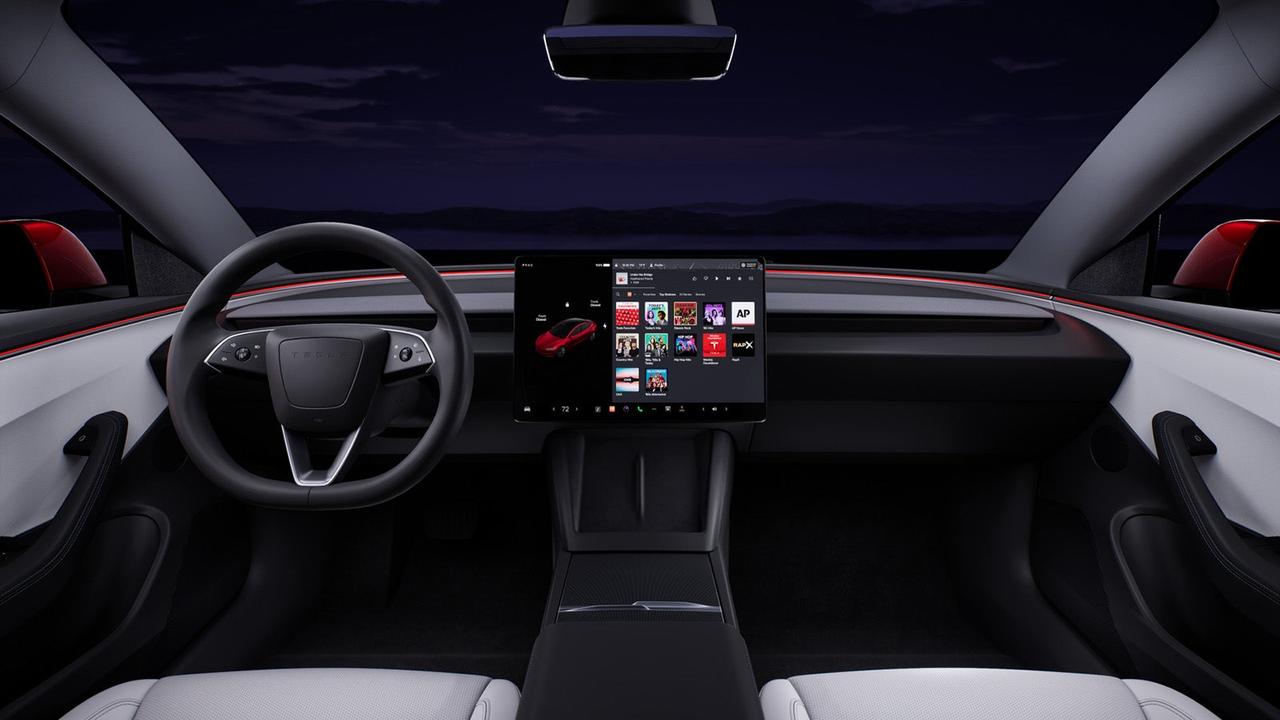
The first thing that strikes you as you get behind the wheel is the cabin's ultra-minimal layout. We've called other cars minimal, but the Highland Model 3 truly takes this to the extreme. The dashboard contains the steering wheel, the infotainment screen and the glove box – and that's it! Meanwhile, the centre console has two unmarked wireless phone charging slots, a fairly deep storage bin and a pair of cupholders. There's no driver's dials, no stalks on the steering column, no physical gear selector, no visible air vents, and no knobs or buttons of any kind.
Whether this drastic approach works for you will be a matter of taste. We liked the unimpeded driver's view and the fact you're not bombarded with graphics in your eyeline. However, we found more annoyances than benefits. For example, the gear selector is now a swipeable control on the touchscreen, which is less satisfying or intuitive than the old Model 3's column-mounted shifter. Alternatively, you can have the car 'guess' whether you'd like drive or reverse based on its camera output – a needlessly complicated solution to a problem no one had. We should also mention the 'secret' touch-sensitive gear-selector pads by the hazard warning button on the ceiling, which we'd wager a good portion of Model 3 owners don't even know about.
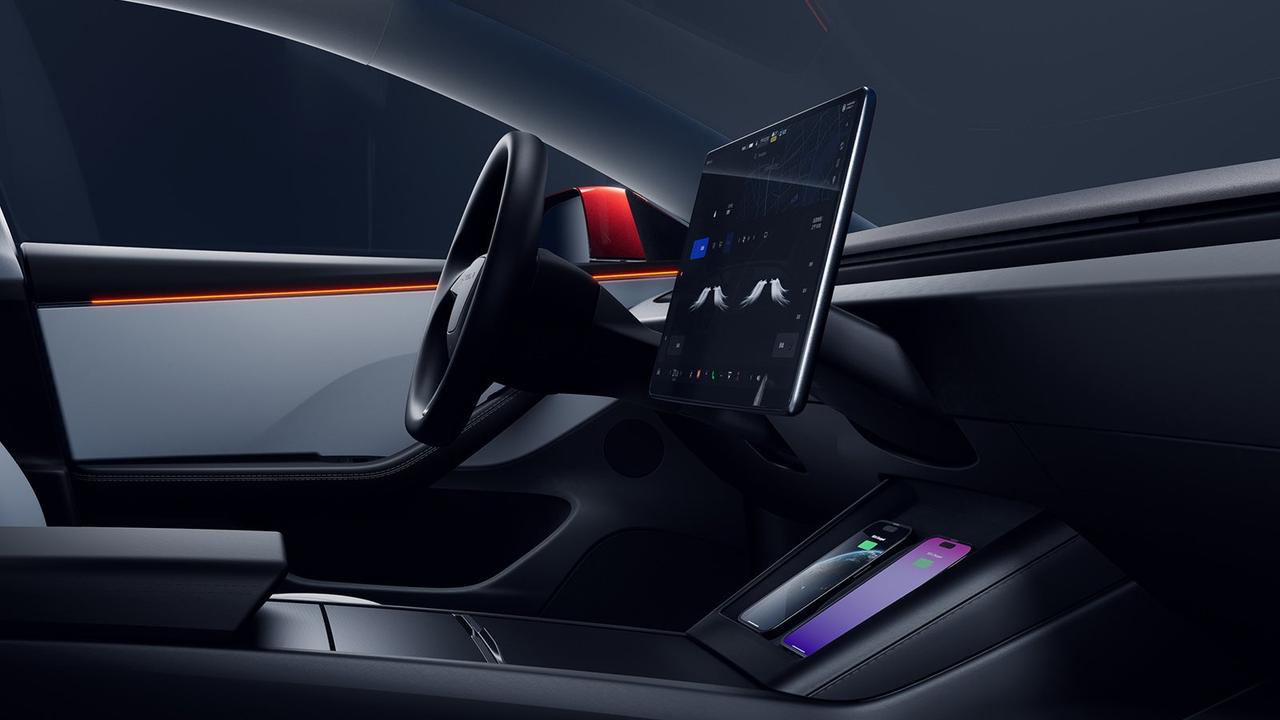
The indicators are especially egregious. Left and right signals are now both touch-sensitive buttons on the left spar of the steering wheel. This makes selecting the correct direction much less intuitive, and becomes even trickier if you're arriving at a junction with the wheel turned, so the buttons are now in a different location and orientation. What's more, there's no way to one-touch indicate for a lane change. Instead, the car is meant to detect when your manoeuvre is complete and automatically deactivate the indicator – but this rarely worked for us. This design was so frustrating that Tesla has now refitted a proper indicator stalk as of October 2025.
On a more positive note, Tesla's build quality has improved throughout the Model 3's time on sale. Early cars might've been a little creaky here or there but there was no evidence of that in our 74-plate test car, which felt solid and sturdy. There's a tasteful mix of faux-leather textiles and cloth across the seats and surfaces, with a thin strip of ambient lighting arcing around the doors and dashboard.

Then we get to the screen – the literal centrepiece in Tesla's cars. It's bright, sharp and clear, and Tesla's kept the graphical complexity to a minimum with a mostly monochrome theme. Plus, it's absolutely stuffed with features, covering all the usual infotainment functions like navigation, audio and telephony, while also featuring gag modes that add whoopee cushion sounds to the seats, or turn your sat nav into the surface of Mars.
The problem we found is that the car has so many features, but they can only be accessed through the screen. That's asking an awful lot of the screen and its menus, leaving the whole thing feeling a bit bewildering at first sight – despite being one of the better-designed systems out there. For things like adjusting the climate control, aiming the air vents or even accessing the glovebox – all done through the screen on the Model 3 – we found ourselves missing the easy-to-use dials and buttons found in some rivals.
A nice touch on Highland Model 3s is the addition of a small screen for rear passengers. This lets you adjust non-driver features like rear-seat climate control, and access video and audio streaming services. Like the front screen, it can play a selection of video games, controlled either by touch or by pairing a Bluetooth gamepad. There are some decent titles too, including Vampire Survivors and Cuphead, plus a fun Tesla-themed Mario Kart clone. Being picky, the rear screen's a little small and low-mounted for ideal viewing but, since most rivals don't even have this feature, it's still a net positive.
Practicality
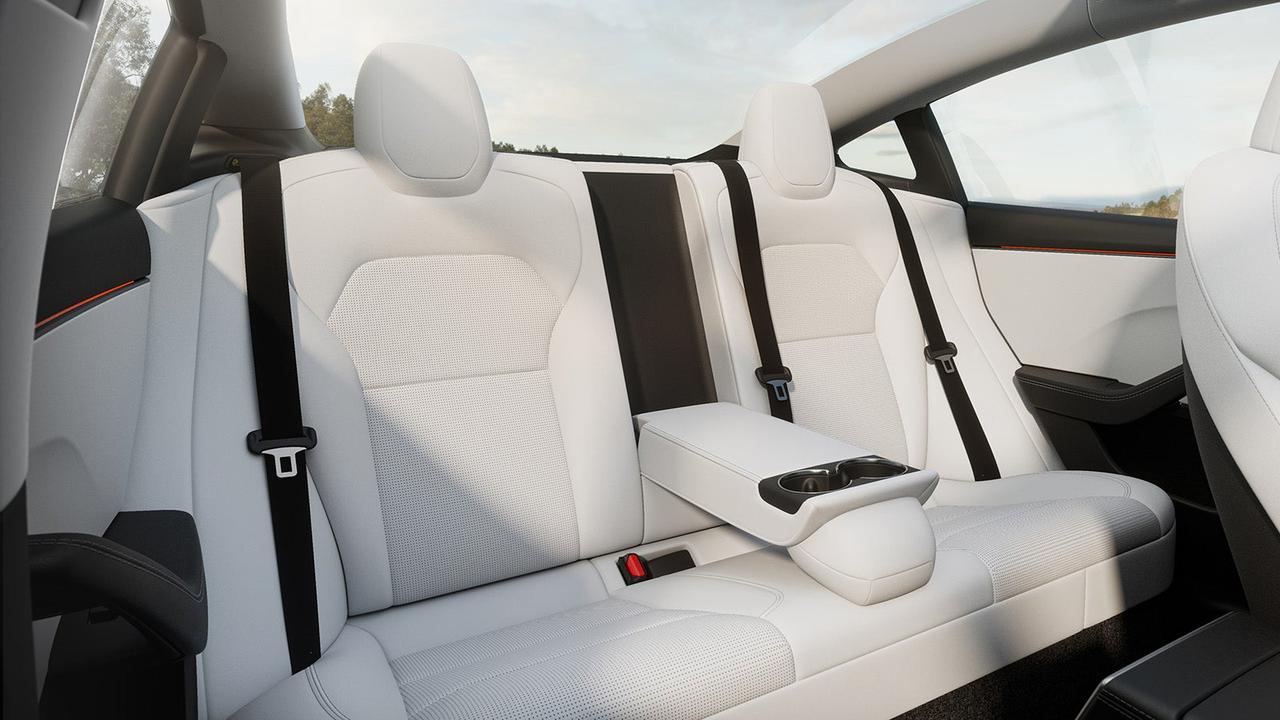
The Model 3 is within a few millimetres of key rivals like the BMW 3 Series, Audi A4 and Mercedes C-Class in all dimensions. Impressively, it marginally beats them all for passenger and cargo room by making the most of its 'skateboard' EV chassis. There's loads of adjustment in the front seats, letting you find a comfy driving position. If you push the front seats all the way back to fit a seven-footer, you'll start to impede on the rear-seat legroom, but to a lesser extent than the Model 3's main competitors.
However, for 99% of the population, there'll be more than enough space across the car's two rows. Rear seats are now a fraction more reclined with the Highland update which, combined with the standard panoramic glass roof, makes the back a pleasant, airy place to sit. Accessing the rear is easy thanks to the wide door openings, but watch out for the doors themselves which are long and easy to ding into adjacent cars.
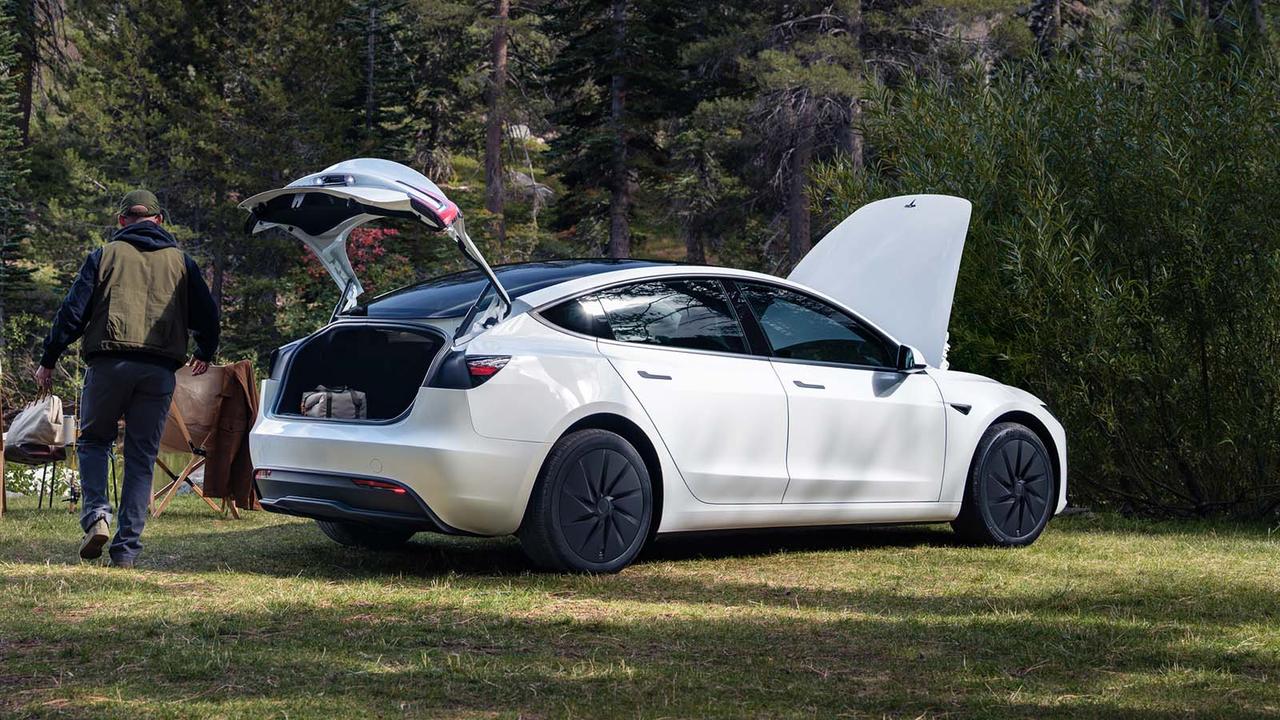
Another benefit of the car's EV platform is that both front and rear spaces can be used for storing cargo. The Model 3's 425-litre rear boot is competitive with its key rivals, but the addition of the 88-litre front 'frunk' means you can turn the car into a proper pack mule for a driving holiday. In fact, the only real drawback here is the car's saloon-style boot opening, which makes it a little trickier to load bulky objects. If that's a problem for you – or you have a four-legged friend to transport – the Model Y with its larger hatchback-style boot might be a better choice.
Elsewhere, cabin storage is reasonably good. There are door bins large enough for a drinks bottle and some small items, plus a decent storage bin between the front seats and a small centre console compartment, too. The dual wireless phone chargers are conveniently placed to chuck your device in as you enter the car, though they would benefit from a retaining strap or clip to stop your phone sliding around when driving. There are USB-C outlets in the centre console and below the rear screen, but they're unmarked so they're easy to miss.
Range and performance
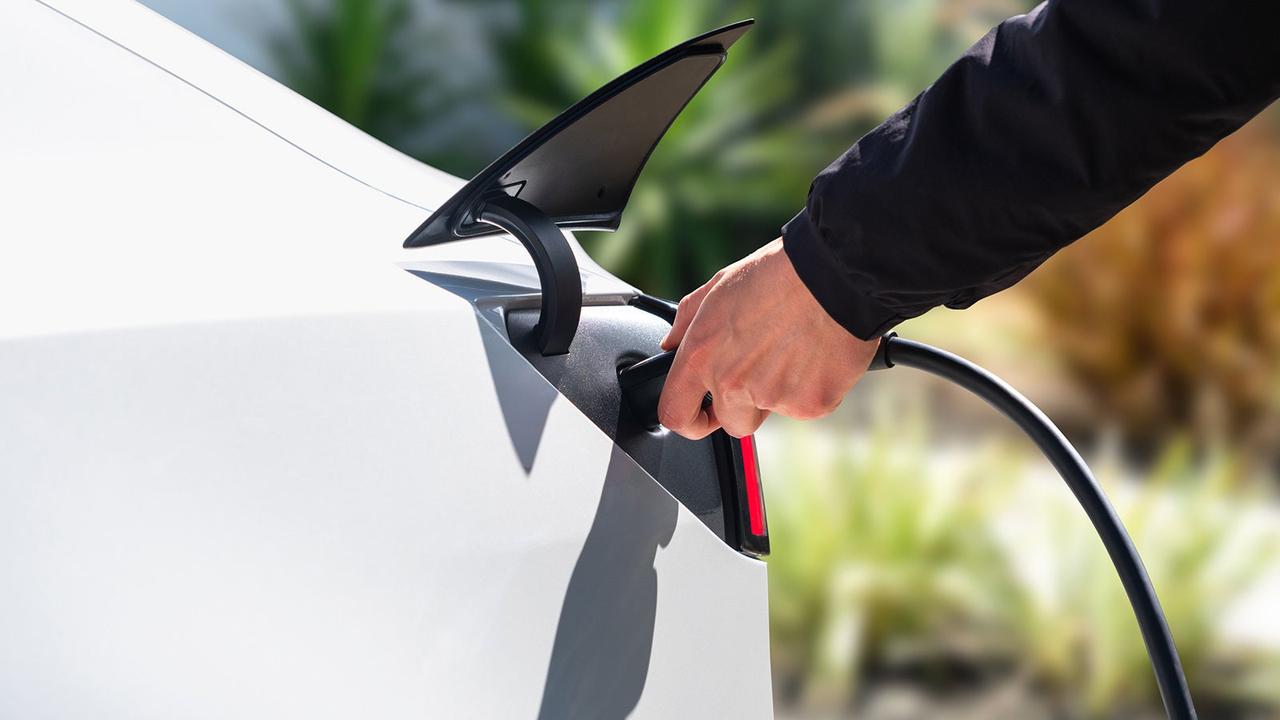
Our test Model 3 is the entry-level version – a single 245hp rear-mounted motor and the smaller 57.5kWh battery pack. Claimed range with this setup is 318 miles, though Tesla has improved this slightly to 323 miles for 2025 cars. That's a lot of range to squeeze from a relatively small battery pack, which is testament to the Model 3's efficiency, being both lighter and more aerodynamic than its key rivals. We reckon most drivers will comfortably manage 250 miles from this setup in day-to-day driving.
Despite its lowly status, our RWD car still felt very lively when we mashed the throttle. The car feels every bit as fast as its 5.8-second 0-60mph time suggests, which is comfortably into hot-hatch territory. Acceleration is smooth and swift with no gears to change or clutches to manage – and doesn't let up until you're comfortably into fast motorway speeds.
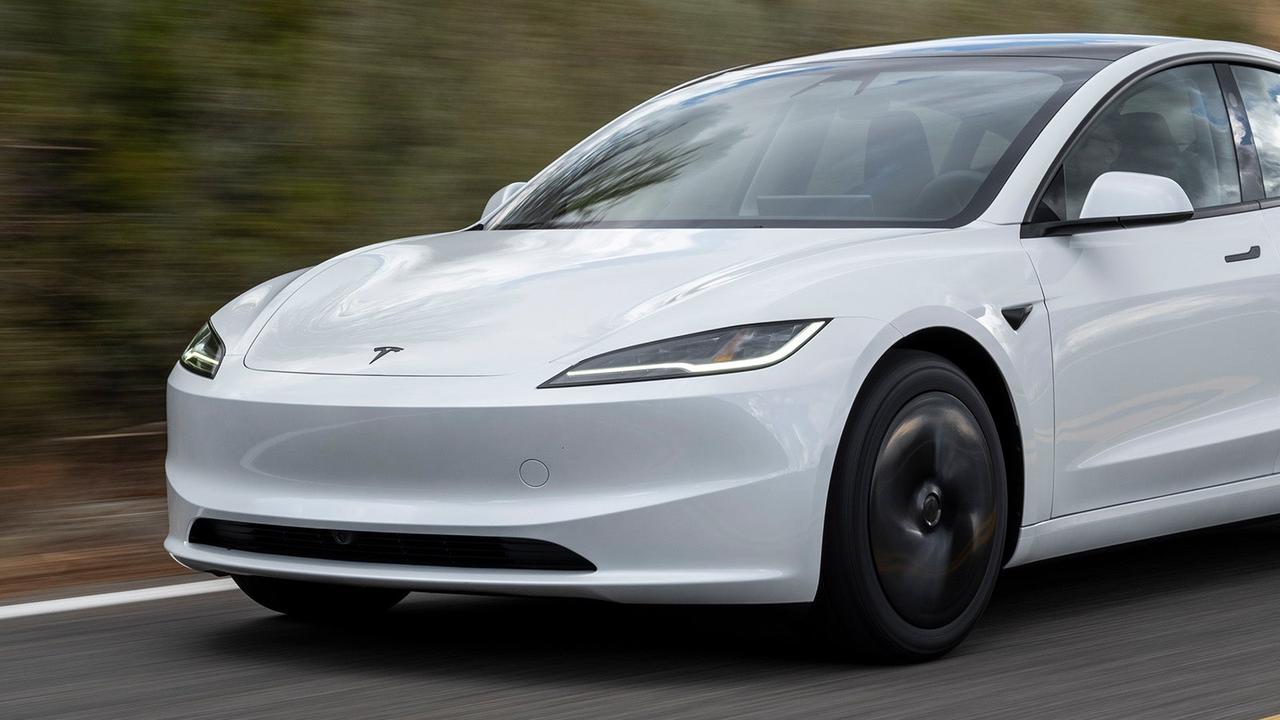
Long-range cars get a more powerful rear motor, knocking the 0-60mph time down to 4.9 seconds. Or you can upgrade to a dual-motor car with all-wheel drive, which sprints to 60mph in just 4.2 seconds – knocking on the door of some serious sports cars. We've experienced this setup in a pre-facelift Model 3 and it can readily pin you to your seat if you driver has a heavy right foot.
Upgrading from entry-level to all-wheel drive pushes the price from £40,000 to £50,000, or you can add a further £10,000 to spec the Model 3 Performance. This fits beefier motors and brings the 0-60mph time down to a stomach-churning 2.9 seconds – faster than some million-dollar hypercars. This version also gets uprated suspension and brakes to cope with the extra performance, plus sports seats and special drive modes.
Driving and comfort

For all the Model 3's focus on efficiency and minimalism, it might come as a bit of a surprise to find the car feels really sporty on the road. The main reason for this is the steering, which is ultra-fast and very responsive. This means it takes barely any steering effort to throw the front of the car into a corner. We think Tesla's taken this a bit too far, however, as it's easy to put in too much steering force – not least because the wheel itself doesn't have much weight to it. This means sharp turns or direction changes can cause the car to wobble about on its suspension and feel unsettled. You quickly get used to it, but the sensation is less natural than the BMW 3 Series, for example.
The sporty steering feels at odds with one of the key benefits of the new Highland Model 3 – its suspension setup. Tesla's fitted clever passive 'frequency-selective' dampers, which can can vary their stiffness depending on the kind of bump they're dealing with. This means the car should have good body control over big bumps like potholes, while being softer and smoother over scruffy road surfaces.
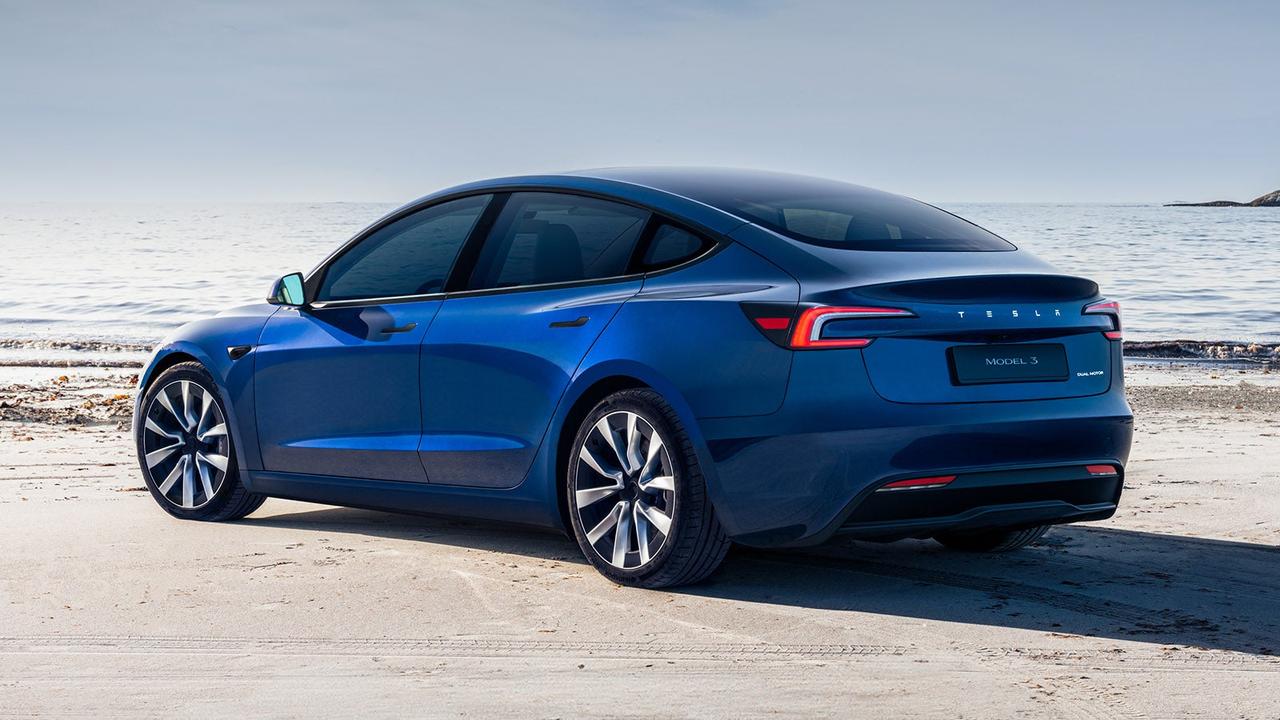
In practice, the new setup mostly works. The Highland car feels far more supple over most road surfaces, without feeling too roly-poly provided you're gentle with the steering. It still has a slightly firm edge, with some of the worst bumps making themselves felt inside the cabin, but it's a dramatic improvement over the old Model 3. So too is the refinement, which is substantially more hushed than the old car. There's almost none of the tyre roar, wind whistle or suspension thumps that were a constant bother in the outgoing model.
Tesla also gives you plenty of options if you don't want to drive the car. Every model comes with basic 'Autopilot', which includes adaptive cruise control and lets the car steer itself within its lane – both of which require the driver to pay constant attention and take over at a moment's notice. These systems work well in the Model 3, though we did find the associated touch-sensitive button on the steering wheel was more fiddly than the older versions, which simply asked you to double press the drive selector stalk.














































